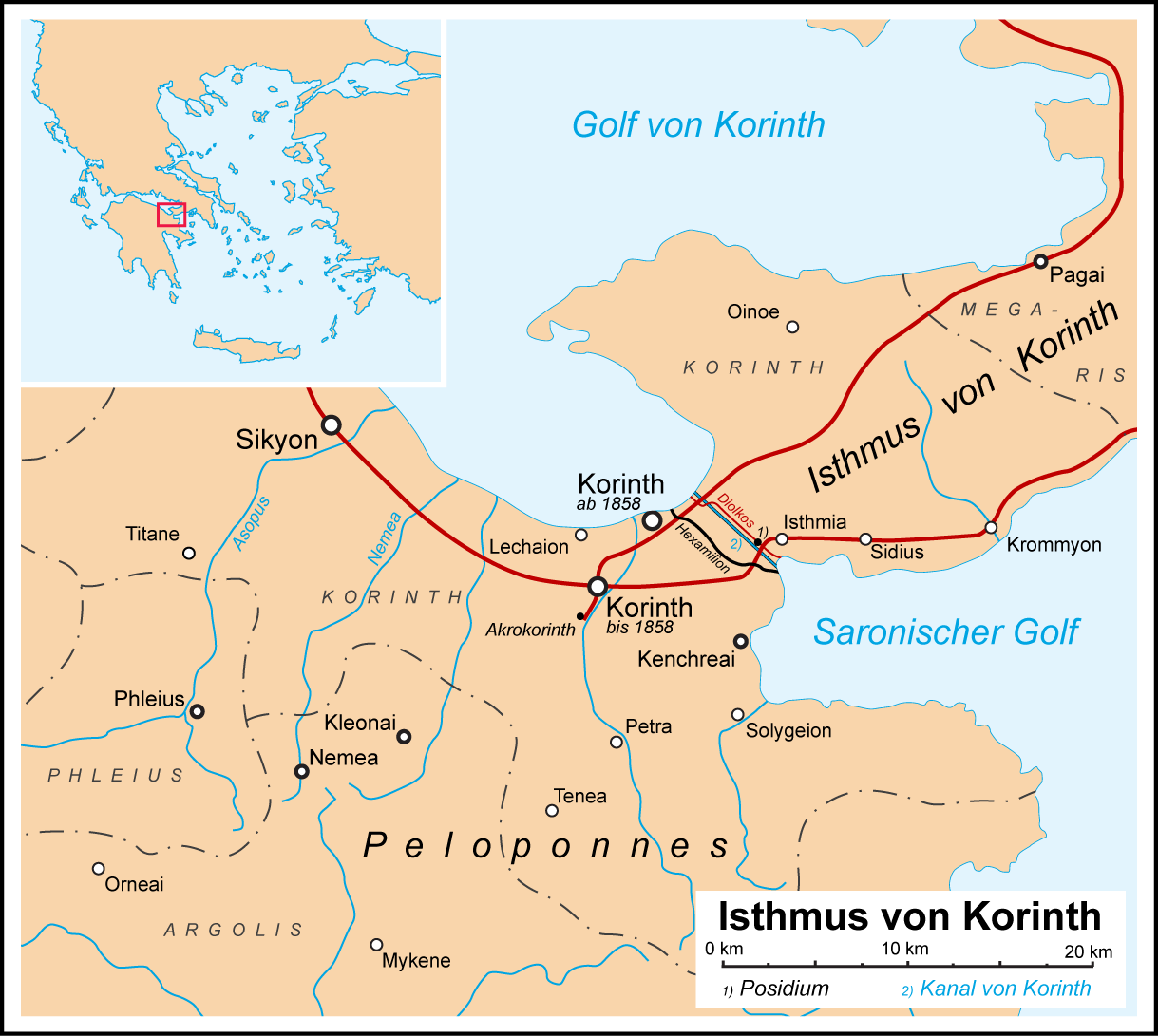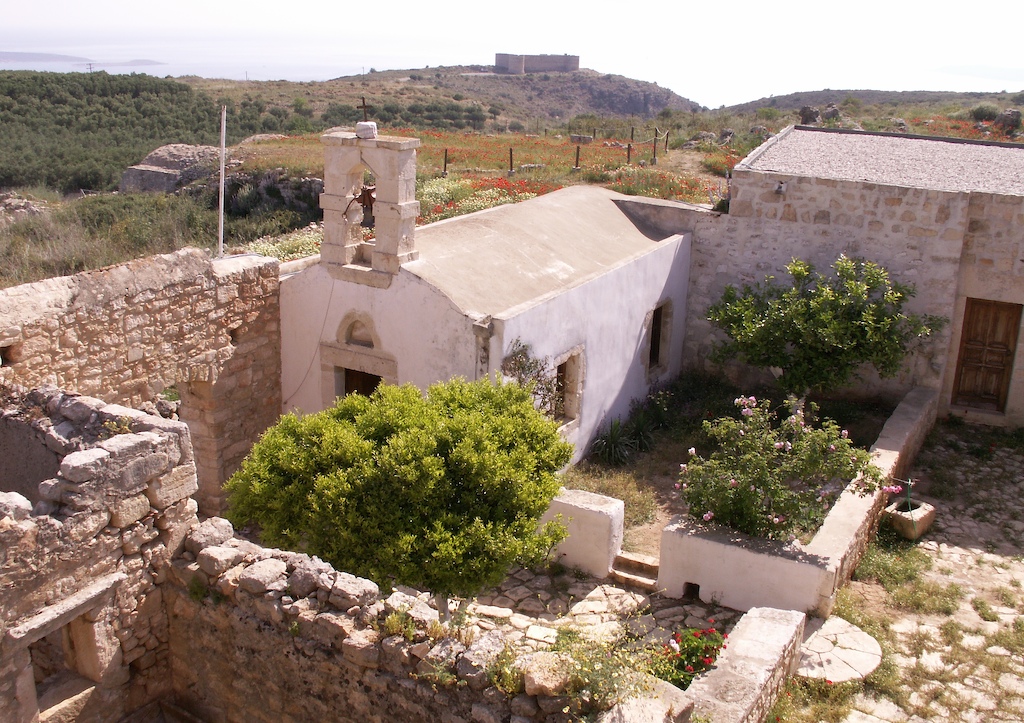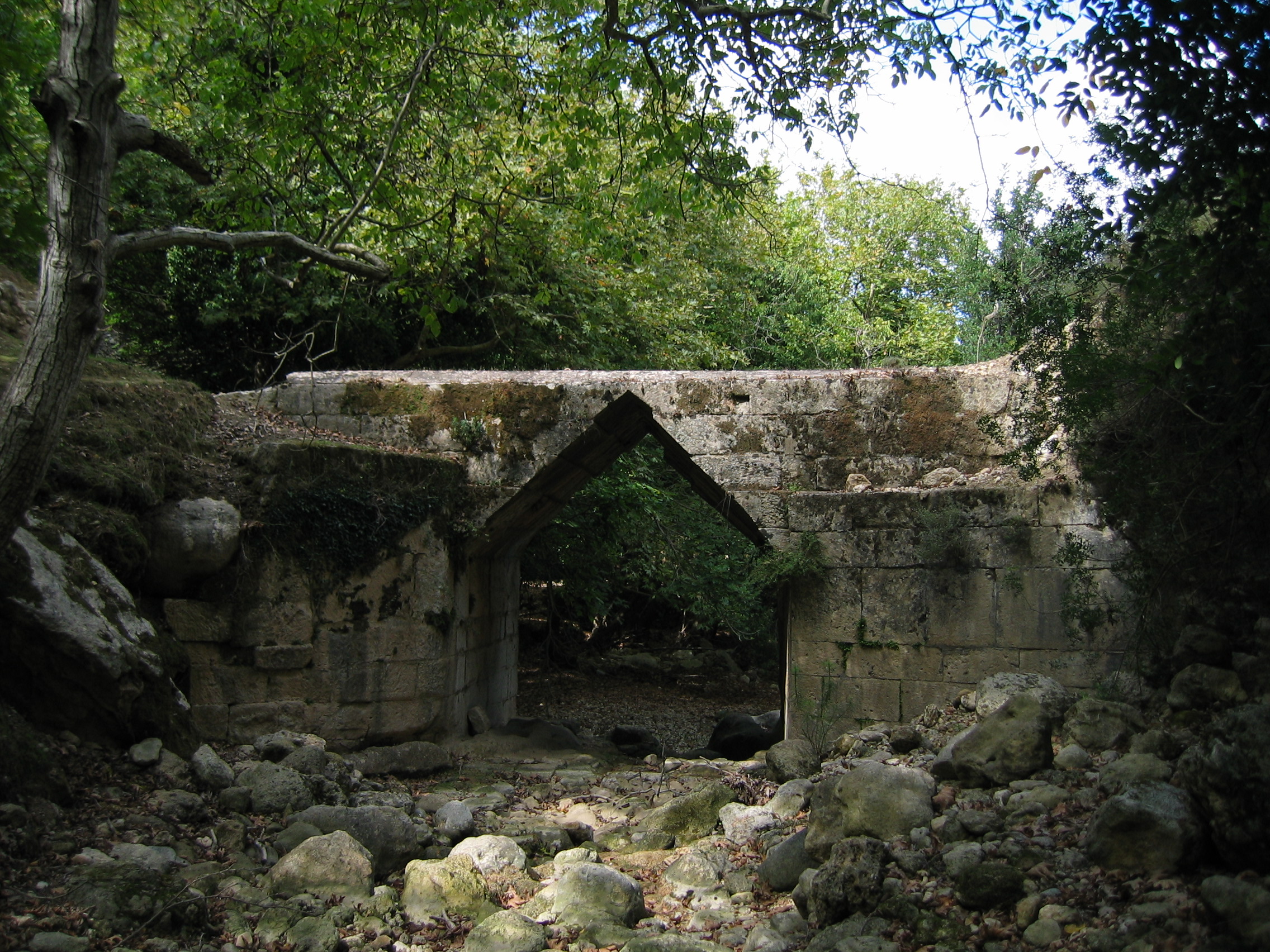|
Lyttian War
The Lyttian War was an internal conflict fought from around 220 BC to about 216 BC between two coalitions of Cretan city-states, led by Cnossus and Polyrrhenia respectively. The events of the war are recorded by the historian Polybius. It is considered "the greatest war in Cretan history" during Antiquity. Prelude The prelude to the conflict in Crete was the commercial war between the cities of Rhodes and Byzantium about the toll introduced by the Byzantines for all ships passing through the Bosporus on their way to the Pontus Euxinus. Posing a huge threat to Hellenistic trade, the conflict was ended in 220 BC with a compromise. Outbreak Meanwhile in Crete the allied cities of Cnossus and Gortys had gained control of the whole island, except for the Spartan colony of Lyttos which alone resisted. When the Rhodian navarch Polemocles returned from the war against Byzantium, the Cnossians thought that he could be helpful to their efforts against Lyttos. So they asked the Rh ... [...More Info...] [...Related Items...] OR: [Wikipedia] [Google] [Baidu] |
Crete
Crete ( el, Κρήτη, translit=, Modern: , Ancient: ) is the largest and most populous of the Greek islands, the 88th largest island in the world and the fifth largest island in the Mediterranean Sea, after Sicily, Sardinia, Cyprus, and Corsica. Crete rests about south of the Greek mainland, and about southwest of Anatolia. Crete has an area of and a coastline of 1,046 km (650 mi). It bounds the southern border of the Aegean Sea, with the Sea of Crete (or North Cretan Sea) to the north and the Libyan Sea (or South Cretan Sea) to the south. Crete and a number of islands and islets that surround it constitute the Region of Crete ( el, Περιφέρεια Κρήτης, links=no), which is the southernmost of the 13 top-level administrative units of Greece, and the fifth most populous of Greece's regions. Its capital and largest city is Heraklion, on the north shore of the island. , the region had a population of 636,504. The Dodecanese are located to ... [...More Info...] [...Related Items...] OR: [Wikipedia] [Google] [Baidu] |
Bosporus
The Bosporus Strait (; grc, Βόσπορος ; tr, İstanbul Boğazı 'Istanbul strait', colloquially ''Boğaz'') or Bosphorus Strait is a natural strait and an internationally significant waterway located in Istanbul in northwestern Turkey. It forms part of the continental boundary between Asia and Europe, and divides Turkey by separating Anatolia from Thrace. It is the world's narrowest strait used for international navigation. Most of the shores of the Bosporus Strait, except for the area to the north, are heavily settled, with the city of Istanbul's metropolitan population of 17 million inhabitants extending inland from both banks. The Bosporus Strait and the Dardanelles Strait at the opposite end of the Sea of Marmara are together known as the Turkish Straits. Sections of the shore of the Bosporus in Istanbul have been reinforced with concrete or rubble and those sections of the Strait prone to deposition are periodically dredged. Name The name of the ... [...More Info...] [...Related Items...] OR: [Wikipedia] [Google] [Baidu] |
Plutarch
Plutarch (; grc-gre, Πλούταρχος, ''Ploútarchos''; ; – after AD 119) was a Greek Middle Platonist philosopher, historian, biographer, essayist, and priest at the Temple of Apollo in Delphi. He is known primarily for his '' Parallel Lives'', a series of biographies of illustrious Greeks and Romans, and '' Moralia'', a collection of essays and speeches. Upon becoming a Roman citizen, he was possibly named Lucius Mestrius Plutarchus (). Life Early life Plutarch was born to a prominent family in the small town of Chaeronea, about east of Delphi, in the Greek region of Boeotia. His family was long established in the town; his father was named Autobulus and his grandfather was named Lamprias. His name is derived from Pluto (πλοῦτον), an epithet of Hades, and Archos (ἀρχός) meaning "Master", the whole name meaning something like "Whose master is Pluto". His brothers, Timon and Lamprias, are frequently mentioned in his essays and dialogue ... [...More Info...] [...Related Items...] OR: [Wikipedia] [Google] [Baidu] |
Aratus Of Sicyon
Aratus of Sicyon (Ancient Greek: Ἄρατος ὁ Σικυώνιος; 271–213 BC) was a politician and military commander of Hellenistic Greece. He was elected strategos of the Achaean League 17 times, leading the League through numerous military campaigns including the Cleomenean War and the Social War. Aratus was exiled to Argos at the age of seven, after his father, the magistrate of Sicyon, was killed in a coup. In 251 BC, he led an expedition composed of other exiles which freed Sicyon from tyranny, and assumed power in the city. Sicyon joined the Achaean League, in which Aratus would later be elected '' strategos''. In his first major campaign as strategos, he seized the Macedonian-held citadel of Acrocorinth, previously believed impregnable. After conquering the Acrocorinth, Aratus pursued the Achaean League's expansion. When the Spartan king Cleomenes III conquered the Achaean cities of Argos and Corinth, Aratus succeeded in securing an alliance with his er ... [...More Info...] [...Related Items...] OR: [Wikipedia] [Google] [Baidu] |
Strategos
''Strategos'', plural ''strategoi'', Latinized ''strategus'', ( el, στρατηγός, pl. στρατηγοί; Doric Greek: στραταγός, ''stratagos''; meaning "army leader") is used in Greek to mean military general. In the Hellenistic world and the Eastern Roman Empire the term was also used to describe a military governor. In the modern Hellenic Army, it is the highest officer rank. Etymology ''Strategos'' is a compound of two Greek words: ''stratos'' and ''agos''. ''Stratos'' (στρατός) means "army", literally "that which is spread out", coming from the proto-Indo-European root *stere- "to spread". ''Agos'' (ἀγός) means "leader", from ''agein'' (ἄγειν) "to lead", from the proto-Ιndo-Εuropean root *ag- "to drive, draw out or forth, move”. Classical Greece Athens In its most famous attestation, in Classical Athens, the office of ''strategos'' existed already in the 6th century BC, but it was only with the reforms of Cleisthenes in 50 ... [...More Info...] [...Related Items...] OR: [Wikipedia] [Google] [Baidu] |
Aptera, Greece
Aptera ( or ) or Apteron was an ancient city, now an archaeological site in western Crete, a kilometre inland from the southern shore of Souda Bay, about 13 km east of Chania in the municipality of Akrotiri. History It is mentioned (A-pa-ta-wa) in Linear B tablets from the 14th-13th centuries BC. With its highly fortunate geographical situation, the city-state was powerful from Minoan through Hellenistic times, when it gradually declined. However, the Minoan settlement of the Bronze Age was located about 1.5 km away from Aptera, at the place of the modern Stylos settlement. In Greek mythology, Aptera was the site of the legendary contest between the Sirens and the Muses, when after the victory of the Muses, the Sirens lost the feathers of their wings from their shoulders, and having thus become white, cast themselves into the sea. The name of the city literally means "without wings", and the neighbouring islands Leucae means "white". In the third century BC, ... [...More Info...] [...Related Items...] OR: [Wikipedia] [Google] [Baidu] |
Phocis (ancient Region)
Phocis was an ancient region in the central part of Ancient Greece, which included Delphi. A modern administrative unit, also called Phocis, is named after the ancient region, although the modern region is substantially larger than the ancient one. Geopolitically, Phocis was the country of the Phocians, who spoke their own version of Doric Greek, one of the three main dialects of ancient Greek. They were one of several small mountain states of Central Greece, whose dialects are classified as Northwest Doric. It was from their region that the Dorians crossed the Gulf of Corinth at the beginning of the Greek Iron Age to burn Pylos and other southern Greek strongholds and seize control of the Peloponnesus. The dialects of the two groups of Dorians north and south of the Gulf then began to diverge. One of the states around Phocis was still called Doris in classical times. As there is considerable evidence that the invasion began about 1000 BC, the ancestors of the classical Phocia ... [...More Info...] [...Related Items...] OR: [Wikipedia] [Google] [Baidu] |
Philip Of Macedon
Philip II of Macedon ( grc-gre, Φίλιππος ; 382 – 21 October 336 BC) was the king (''basileus'') of the ancient kingdom of Macedonia from 359 BC until his death in 336 BC. He was a member of the Argead dynasty, founders of the ancient kingdom, and the father of Alexander the Great. The rise of Macedon—its conquest and political consolidation of most of Classical Greece during his reign—was achieved by his reformation of the army (the establishment of the Macedonian phalanx that proved critical in securing victories on the battlefield), his extensive use of siege engines, and his utilization of effective diplomacy and marriage alliances. After defeating the Greek city-states of Athens and Thebes at the Battle of Chaeronea in 338 BC, Philip II led the effort to establish a federation of Greek states known as the League of Corinth, with him as the elected hegemon and commander-in-chief of Greece for a planned invasion of the Achaemenid Empire of Persia. How ... [...More Info...] [...Related Items...] OR: [Wikipedia] [Google] [Baidu] |
Social War (220-217 BC) , or the Italian or Marsic War, fought between the Roman Republic and several Italian cities
{{disambig ...
Social War may refer to: * Social War (357–355 BC), or the War of the Allies, fought between the Second Athenian Empire and the allies of Chios, Rhodes, and Cos as well as Byzantium * Social War (220–217 BC), fought among the southern Greek states * Social War (91–87 BC) The Social War (from Latin , properly 'war of the allies'), also called the Italian War or the Marsic War, was fought from 91 to 87 BC between the Roman Republic and several of its autonomous allies () in Italy. The Italian allies wanted Rom ... [...More Info...] [...Related Items...] OR: [Wikipedia] [Google] [Baidu] |
Mount Ida
In Greek mythology, two sacred mountains are called Mount Ida, the "Mountain of the Goddess": Mount Ida (Crete), Mount Ida in Crete, and Mount Ida (Turkey), Mount Ida in the ancient Troad region of western Anatolia (in modern-day Turkey), which was also known as the ''Mount Ida (Turkey), Phrygian Ida'' in classical antiquity and is mentioned in the ''Iliad'' of Homer and the ''Aeneid'' of Virgil. Both are associated with the mother goddess in the deepest layers of pre-Greek myth, in that Mount Ida in Anatolia was sacred to Cybele, who is sometimes called ''Mater Idaea'' ("Idaean Mother"), while Rhea (mythology), Rhea, often identified with Cybele, put the infant Zeus to nurse with Amalthea (mythology), Amaltheia at Mount Ida in Crete. Thereafter, his birthplace was sacred to Zeus, the king and father of Greek gods and goddesses. Etymology The term ''Ida'' (Ἴδη) is of unknown origin. Instances of ''i-da'' in Linear A probably refer to the mountain in Crete. Three inscriptions b ... [...More Info...] [...Related Items...] OR: [Wikipedia] [Google] [Baidu] |
Phaistos
Phaistos ( el, Φαιστός, ; Ancient Greek: , , Minoan: PA-I-TO?http://grbs.library.duke.edu/article/download/11991/4031&ved=2ahUKEwjor62y3bHoAhUEqYsKHZaZArAQFjASegQIAhAB&usg=AOvVaw1MwIv3ekgX-SxkJrbORipd ), also transliterated as Phaestos, Festos and Latin Phaestus, is a Bronze Age archaeological site at modern Faistos, a municipality in south central Crete. Ancient Phaistos was located about east of the Mediterranean Sea and south of Heraklion, the second largest city of Minoan Crete. The name Phaistos survives from ancient Greek references to a city in Crete of that name at or near the current ruins. The name is substantiated by the coins of the classical city. They display motifs such as Europa sitting on a bull, Talos with wings, Heracles without beard and being crowned, and Zeus in the form of a naked youth sitting on a tree. On either the obverse or the reverse the name of the city, or its abbreviation, is inscribed, such as or , for ''Phaistos'' or ''Phaisti ... [...More Info...] [...Related Items...] OR: [Wikipedia] [Google] [Baidu] |
Eleutherna
Eleutherna ( grc-gre, Ἐλεύθερνα), also called Apollonia ( grc-gre, Ἀπολλωνία), was an ancient city-state in Crete, Greece, which lies 25 km southeast of Rethymno in Rethymno regional unit. Archaeologists excavated the site, located on a narrow northern spur of Mount Ida, the highest mountain in Crete. The site is about 1 km south of modern town of Eleftherna, about 8 km north east of Moni Arkadiou, in the current municipality of Rethymno. It flourished from the Dark Ages of Greece’s early history until Byzantine times. History In the systematic Eleutherna project, a team of archaeologists from the University of Crete led by Prof. N. Stampolidis has been in charge since 1984. Surveys and systematic excavations have revealed the city's settlement patterns, sanctuaries and necropoleis in ''Orthi Petra'', even stone quarries in the surroundings of the ''Prines'' hill. The discovery of the remains of four females in Orthi Petra was declared o ... [...More Info...] [...Related Items...] OR: [Wikipedia] [Google] [Baidu] |







